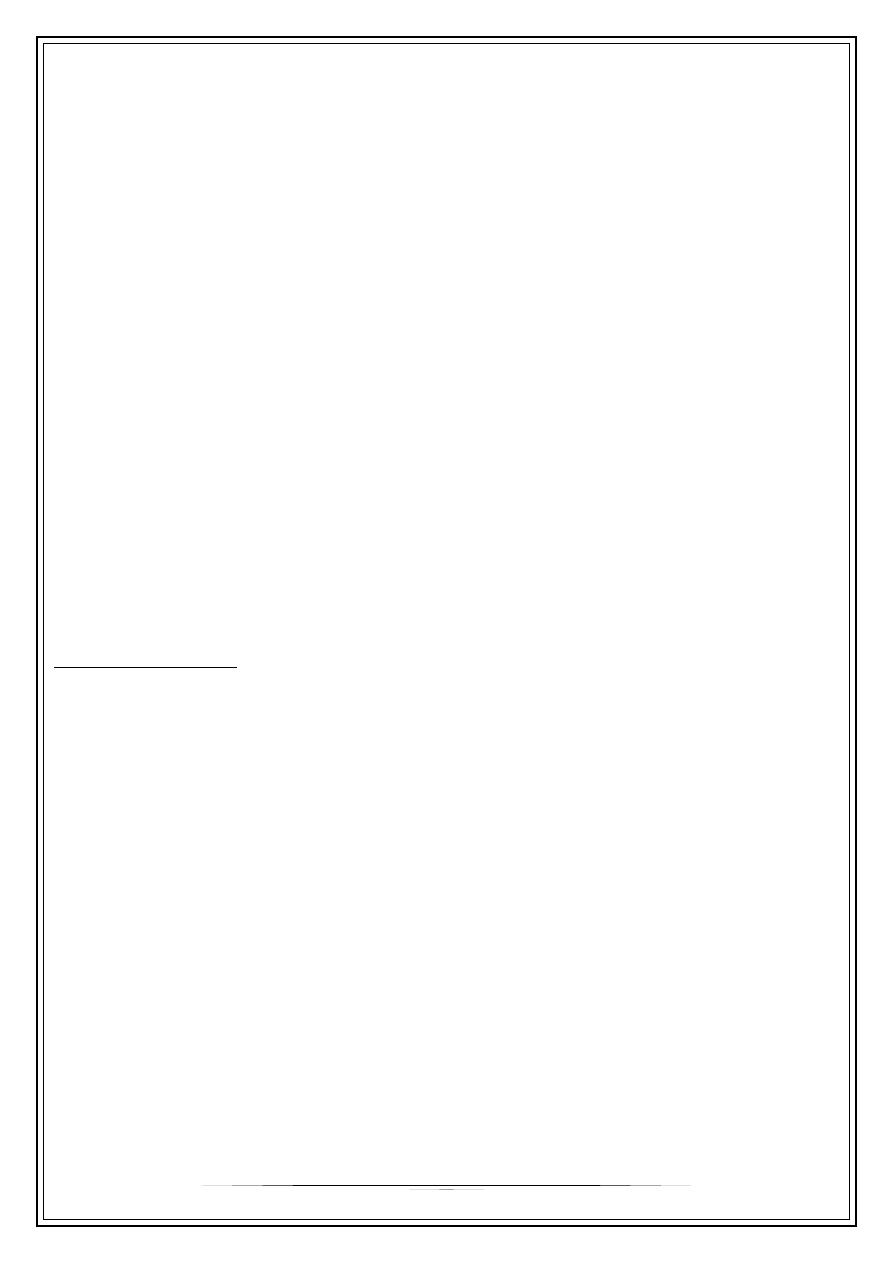
Fifth Stage
E.N.T
Dr. Mushtaq – Lecture 12
1
Larynx: Anatomy & Physiology
Larynx
Lies in front of the laryngo- pharynx from the level of the third to the sixth cervical
vertebrae.
Consists of a framework of cartilages, connected by ligaments and membranes, lined
by a mucous membrane and moved by muscles.
Infantile larynx
➢
Absolutely and relatively
smaller.
➢
Funnel-shaped.
➢
Much softer therefore collapse more easily in forced inspiration.
➢
Lies high up under the tongue.
➢
The plane of its inlet is less oblique.
Laryngeal cartilages
Unpaired crtilages
Thyroid cartilage:
The largest, each half consists of:
1. Ala (lamina)
The two alae meet in the midline, forming an angle of about 90
ْ
in men, about
120
ْ
in women.
2. Superior cornu.
3. Inferior cornu.
Cricoid cartilage:
Thicker and stronger , a signet ring, narrow in front, broad behind.
Cartilage of epiglottis:
Rises up behind the tongue. It is a thin leaf-like sheet of elastic fibrocartilage.
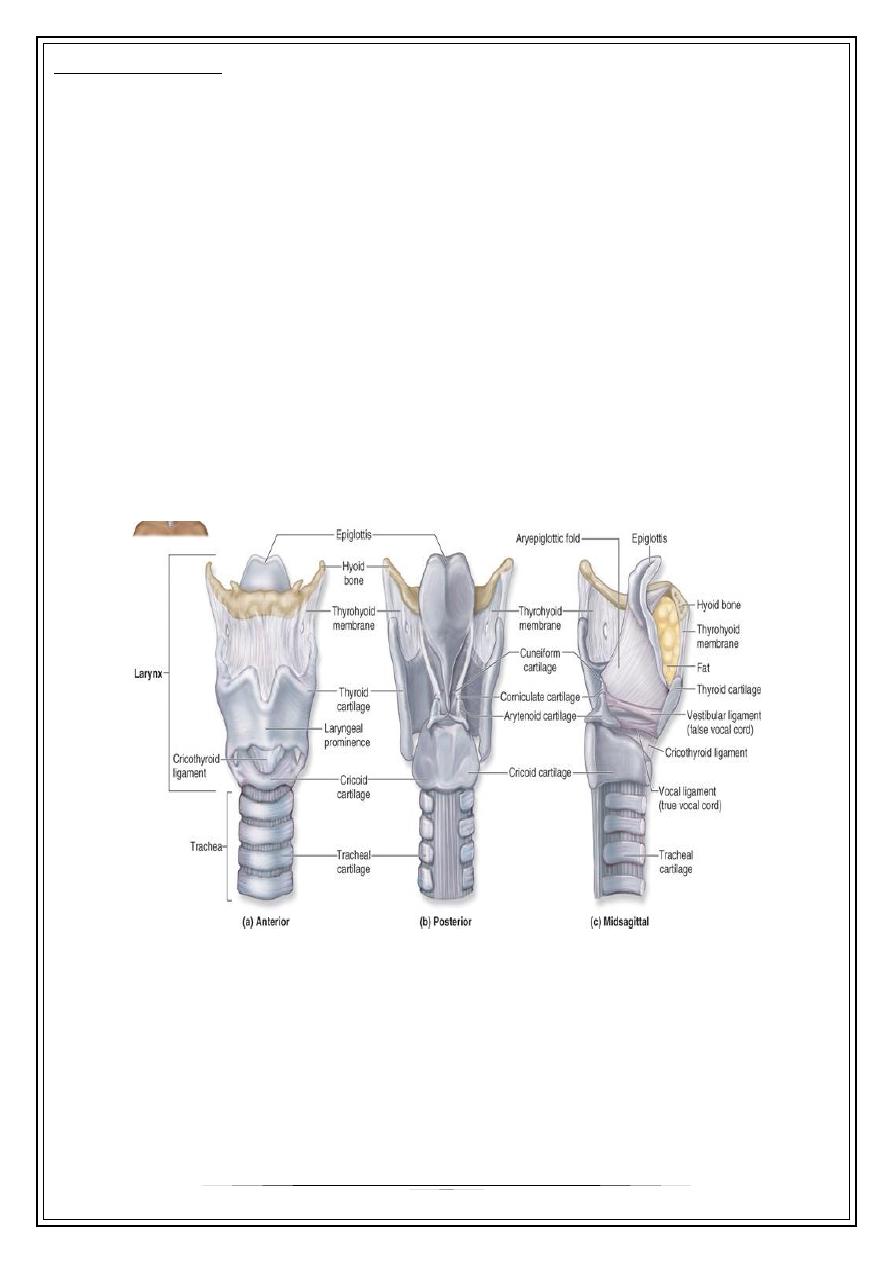
2
Paired cartilages
1. Arytenoid cartilages
Largest. pyramidal in shape.
•
Posterior surface is triangular and concave. It extends laterally into a
muscular process.
•
Anterolateral surface is convex. It extends forward into a vocal process.
•
Medial surface is narrow, smooth
•
Inferior surface or base, is concave. It articulates with the cricoid cartilage.
•
Apex curves backwards to articulate with the corniculate cartilage
2. Corniculate cartilages
3. Cuneiform cartilages
Laryngeal joints
The two important joints
1. Crico-thyroid joint
2. Crico-arytenoid joint
synovial joints,with two movements: Rotation &Gliding.
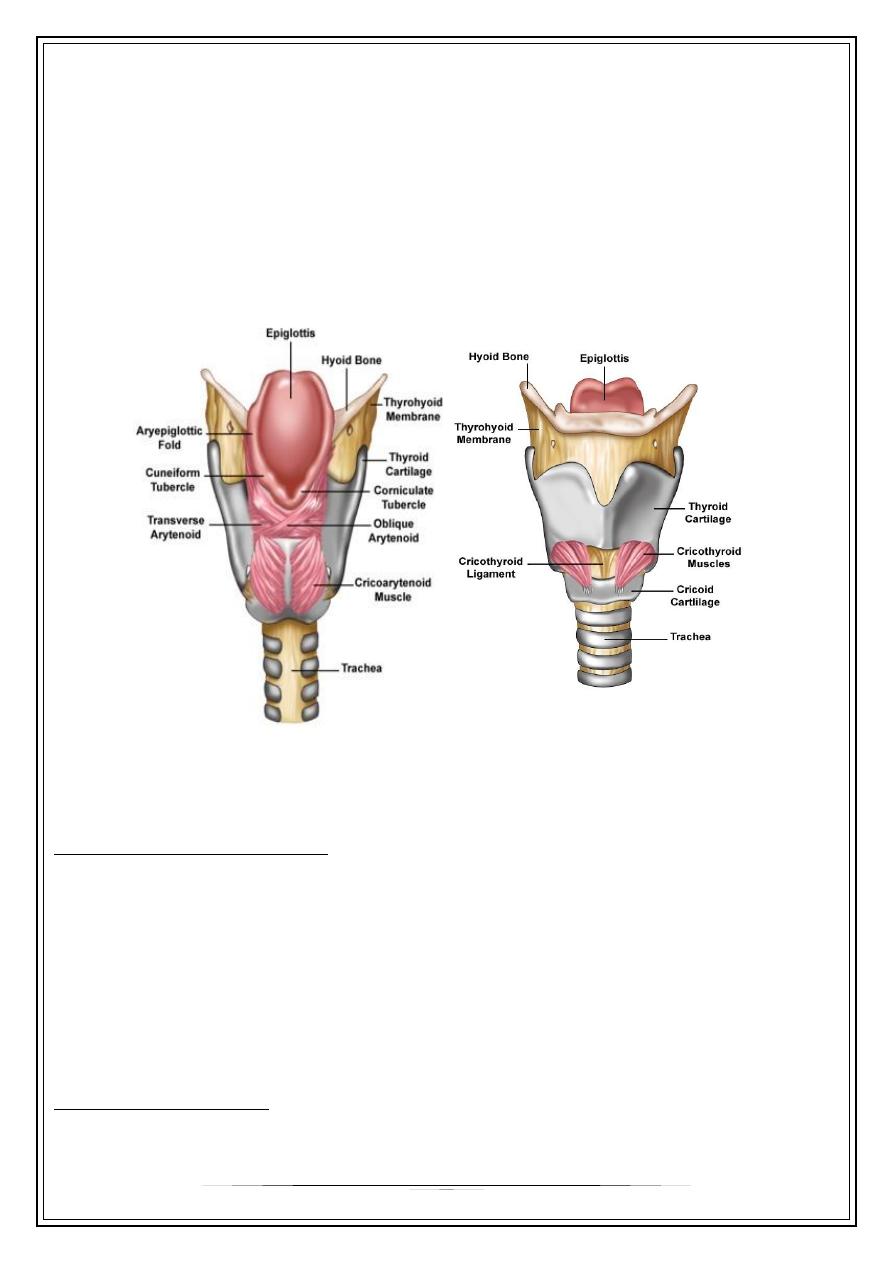
3
Laryngeal ligaments and membranes
1. Intrinsic
2. Extrinsic
Thyrohyoid membrane.
Cricotracheal membrane.
Hyo-epiglottic ligament.
Laryngeal muscles
1. Intrinsic
A. Abductors of the vocal cords
Posterior crico-arytenoid muscle. Opens the glottis.
Origin - from the depression on the posterior surface of the cricoid lamina.
Direction - upwards and outwards.
Insertion - into the
back of the muscular process of the arytenoid cartilage.
B.Adductors of the vocal
Lateral crico-arytenoid muscle:
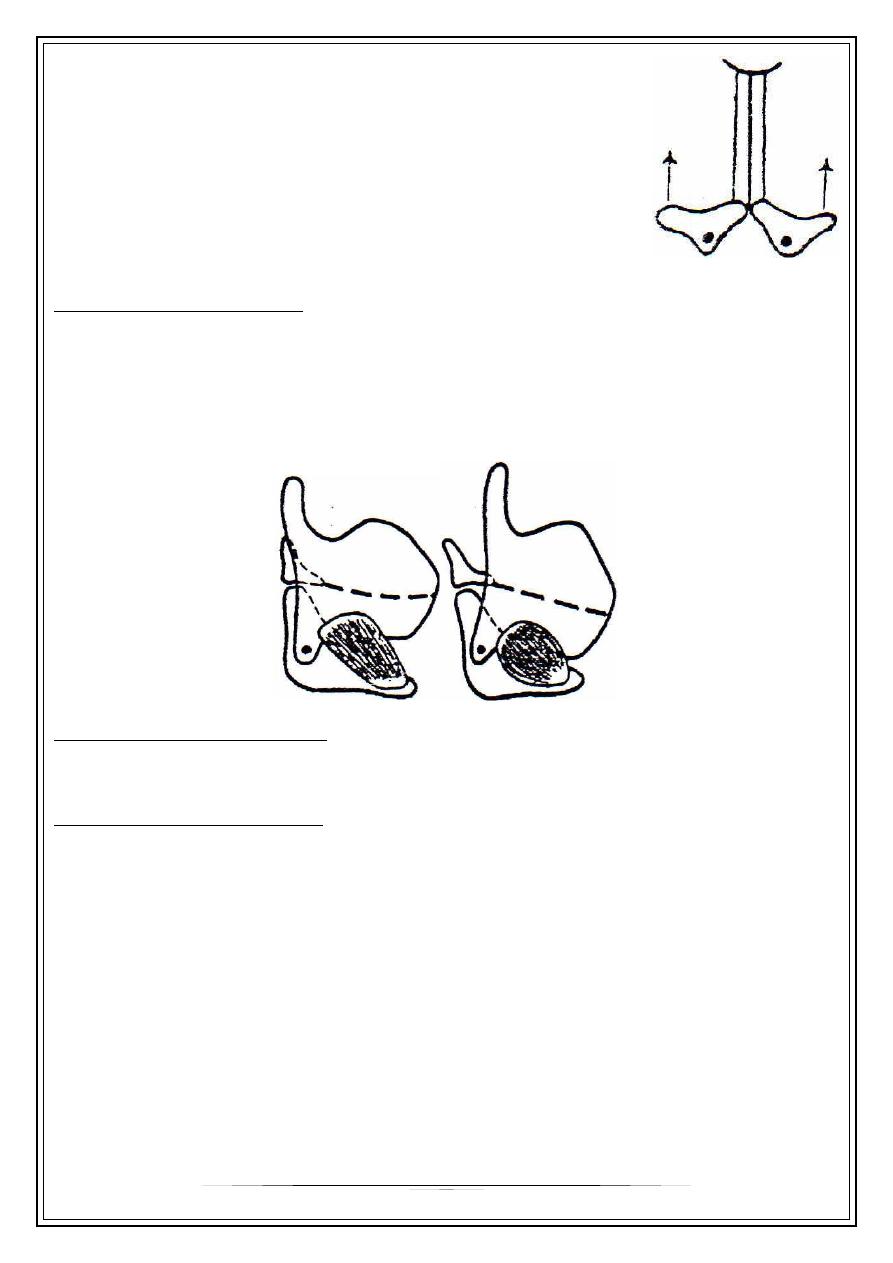
4
Origin - from the upper border of the arch of the cricoid cartilage.
Direction - upwards and backwards.
Insertion into the front of the muscular process of the arytenoid
cartilage.
•
Transverse portion of interarytenoid muscle.
•
External portion of thyro-arytenoid muscle.
C.Tensors of the vocal cords
There are two on each side:
1.Cricothyroid muscle.
2.Internal portion of thyro-arytenoid (vocalis) muscle .
D.Opener of the laryngeal inlet
Thyro-epiglottic muscle is a part of the thyro-arytenoid muscles
E.Closers of the laryngeal inlet
•
Oblique portion of interarytenoid muscle
•
Aryepiglottic muscle
2. Extrinsic
'Strap' muscles of the neck
1. Sternothyroid muscle
2. Thyrohyoid muscle
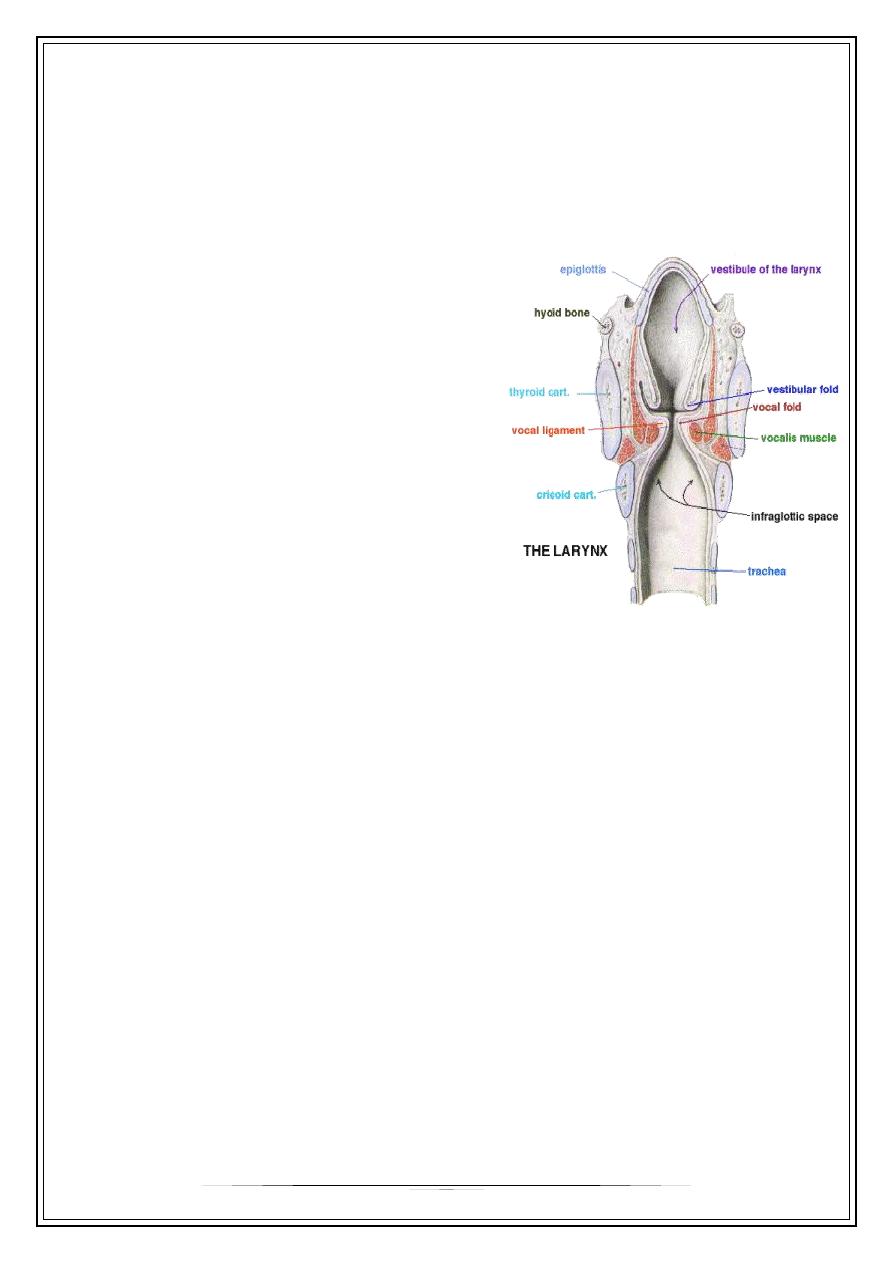
5
Cavity of the Larynx
Extends from the inlet into the laryngopharynx, to the lower border of the cricoid
cartilage.It is divided into three parts by two folds of mucous membrane:
1. False vocal cords
2. True vocal cords
The mucosal folds divide the cavity into the
following parts:
a. Vestibule
Lies between the inlet and the edges of the false
cords
b. Ventricle of larynx
A recess between the false and true vocal cords.
c. Subglottic space
Lies between the true vocal cords and the lower
border of the cricoid cartilage .
Mucous membrane of the larynx
All is Ciliated columnar epithelium except that covers vocal cords & upper part of
vestibule of larynx is Stratified squamous epithelium
Reinke's layer of connective tissue lies immediately under the epithelium of the larynx
and superficial to the elastic layer. There are no glands beneath it and no lymph vessels
in it.
Blood supply of the larynx
The larynx is supplied by:
1. Laryngeal branches of superior thyroid artery.
2. Laryngeal branches of inferior thyroid artery.
3. Cricothyroid branches of superior thyroid artery.
Anastomose freely with one another. Veins accompany the arteries.
Nerve supply of the larynx
The larynx is supplied by branches of the vagus nerve.
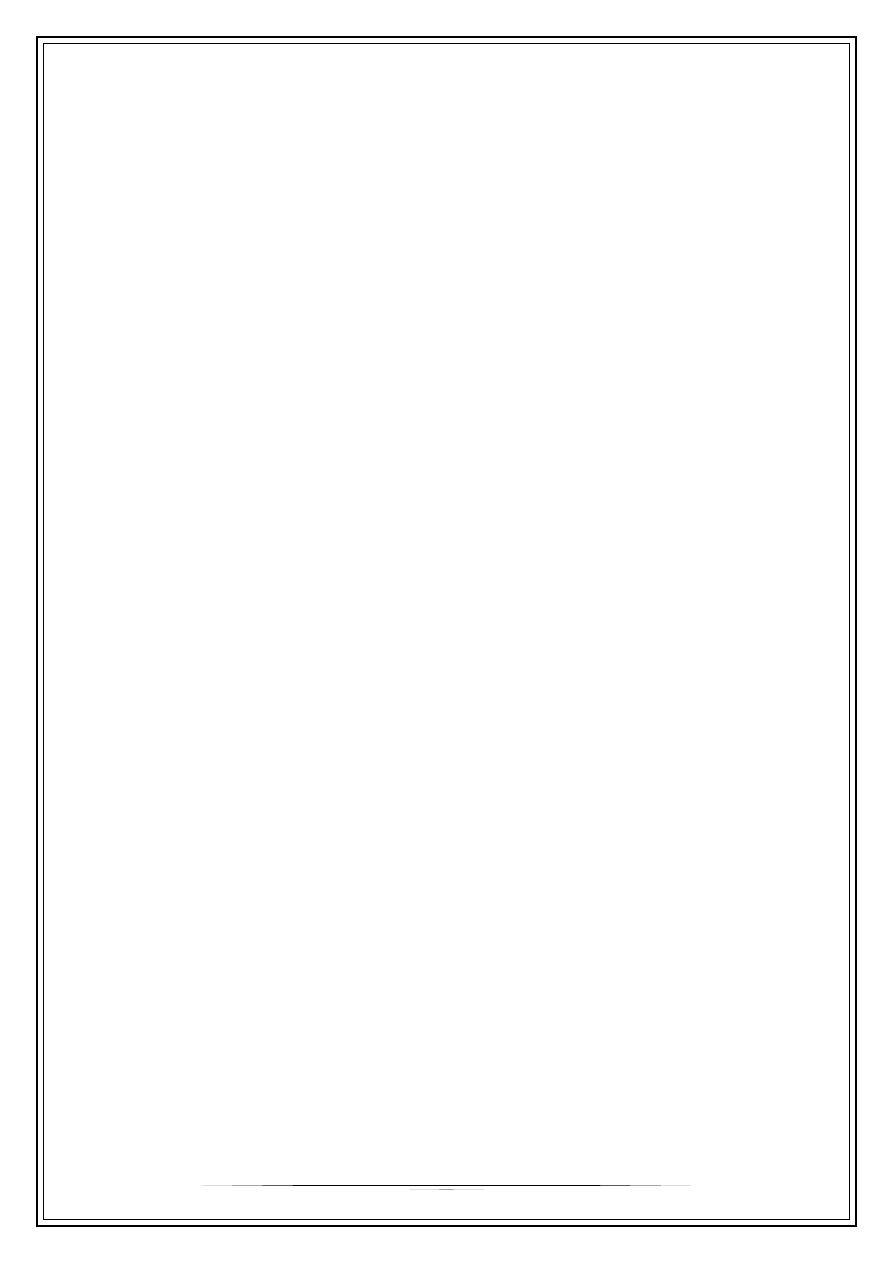
6
Superior laryngeal nerve has two,laryngeal branches:
1. Internal branch. Entirely sensory supplies the cavity of the larynx as far down
as the level of the vocal cords.
2. External branch supplies the cricothyroid muscle
Recurrenr (inferior) laryngeal nerve divides into:
1. An anterolateral (motor) branch which supplies all the intrinsic muscles of the
larynx except the cricothyroid muscle
2. Posteromedial (sensory) branch which supplies the cavity of the larynx below
the level of the vocal cords.
Lymphatic drainage of the larynx
The edges of the vocal cords divide the lymphatic system of the larynx into two parts:
1. Supraglottic above the vocal cords. The vessels drain into:
•
Pre-epiglottic nodes.
•
Upper deep cervical nodes
2. Subglottic below the vocal cords. The vessels drain to:
•
Prelaryngeal and pretracheal nodes.
•
Lower deep cervical nodes
The vocal cords themselves have practically no lymphatic vessels, hence malignant
tumours limited to them do not spread readily.
Applied physiology of the larynx
FUNCTIONS OF THE LARYNX
1.Protection of the lower air passages
1. Closure of the laryngeal inlet
The aryepiglottic folds move towards one another and close the inlet
2. Closure of the glottis
Accompanies closure of the inlet. This normal reflex is present from the time of birth.
3. Cessation of respiration
Automatic, IXth cranial nerve, is initiated by the contact of food with the posterior
pharyngeal wall and base of tongue
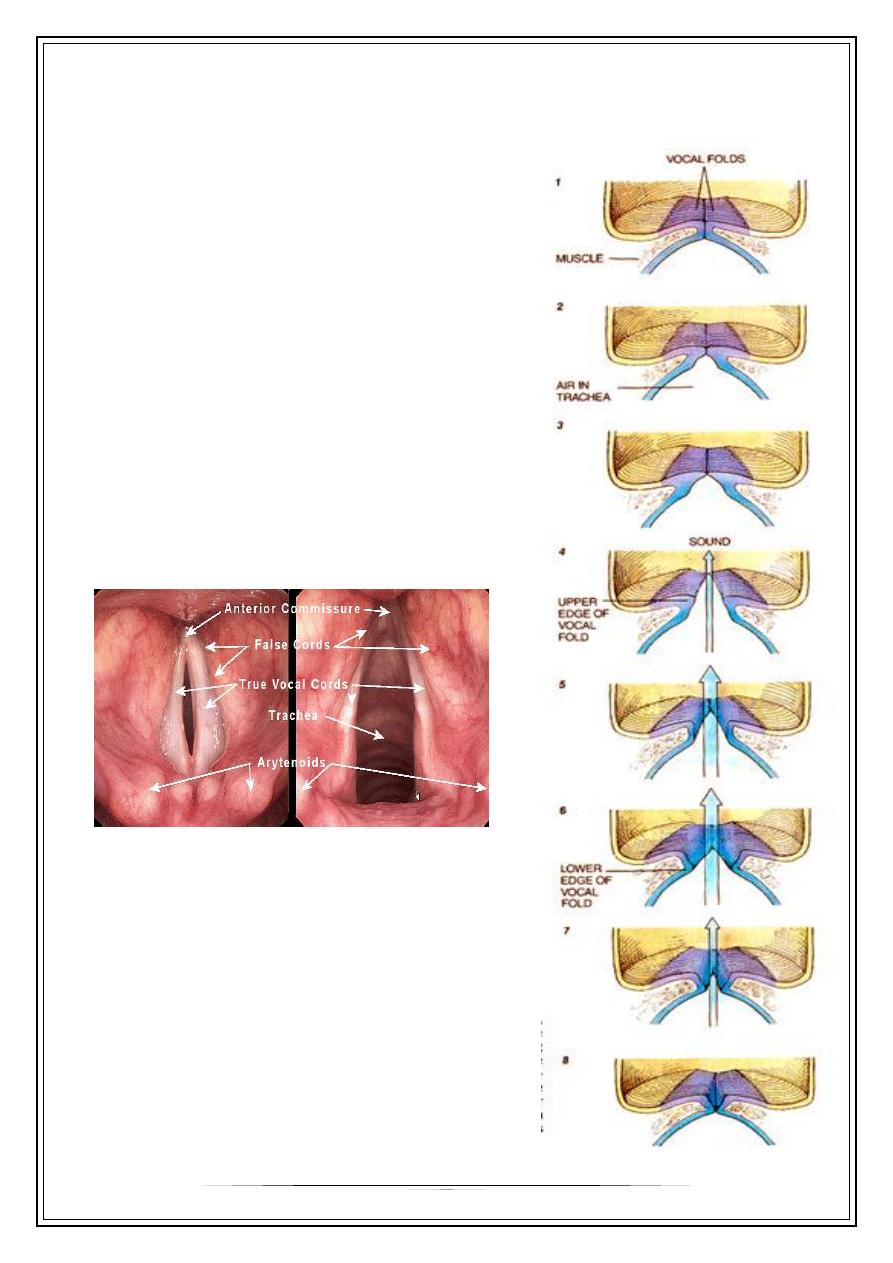
7
4. Cough reflex
Should any particles enter the trachea and bronchi the act of coughing will usually
dislodge them …'watchdog of the lungs'
2.Phonation
Voice is produced by vibration or the vocal cords
1. Pitch
The vibrations of the cords cut the air column into
puffs and the frequency of the puffs determines the
pitch produced. The-larynx is therefore a wind
instrument. The average individual human voice can
produce a frequency range of two octaves in singing.
2. 'Volume'
The intensity of sound produced by the larynx
depends on the air pressure generated in the lungs
by contraction of the abdominal and thoracic
muscles.
3.Respiration
The larynx plays a part in the mechanism of
respiration by reflex adjustments of the glottic
aperture.
4.Fixation of the chest
When the larynx is closed the thoracic cage becomes
fixed permitting climbing or digging. Since the ribs
cannot rise freely , a fixed support is given to the
pectoral muscles.
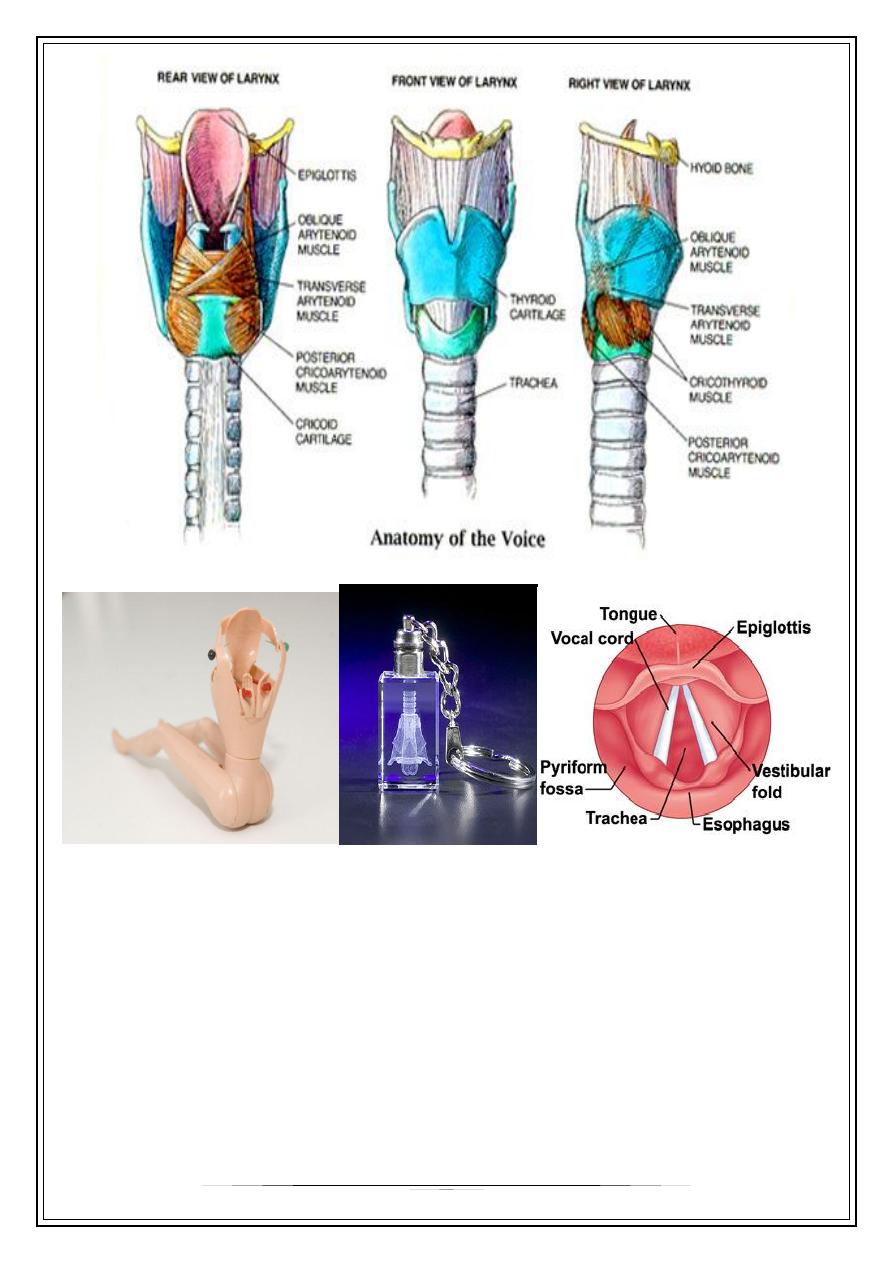
8
Thank you,,,
